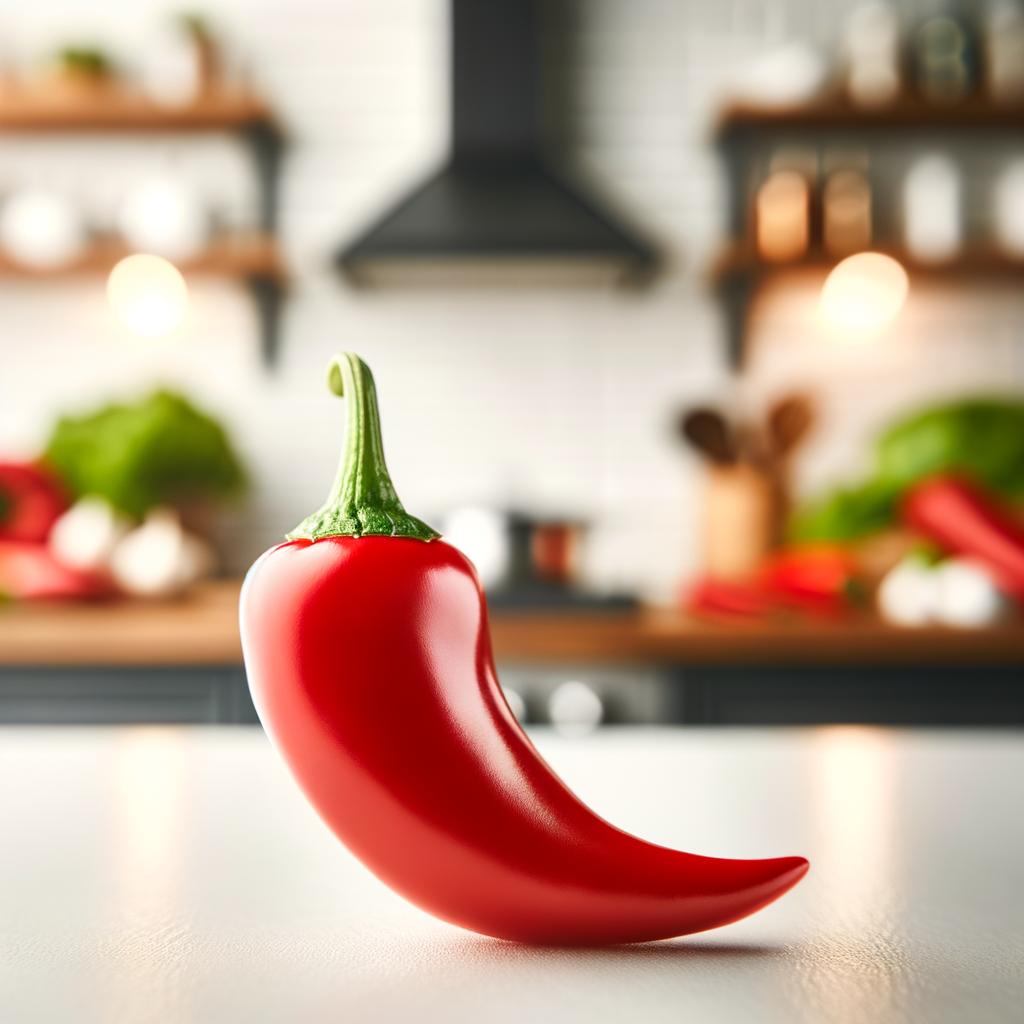Chili Pepper

Description
The Chili Pepper, often known as the fiery queen of spices, is a vibrant ingredient that adds both color and heat to any dish it graces. Its appearance is as varied as its spice levels, ranging from small and round to long and slender, and from a bright, fiery red to a deep, earthy green. The texture of a chili pepper is typically smooth and somewhat leathery, with a crisp crunch when bitten into. Its flavor profile is as complex as its appearance, offering a unique combination of heat, sweetness, and sometimes even a touch of smokiness. The unique characteristic of chili peppers is their capsaicin content, a compound responsible for their spiciness, which sets them apart from other less fiery ingredients.
Primary Uses
Chili peppers are a global culinary superstar, used in a myriad of dishes across various cuisines. They are the heart and soul of Mexican cooking, used in everything from salsas and sauces to traditional mole dishes. In Indian cuisine, they are often dried and ground into powders, adding heat and depth to curries and chutneys. Beyond culinary uses, chili peppers are also used for medicinal purposes, known for their analgesic properties and ability to boost metabolism. They also hold a significant cultural value in many societies, often associated with strength and courage.
History
The history of chili peppers is as hot as their taste. Originating in Mexico over 6000 years ago, they were one of the first self-pollinating crops cultivated in Central and South America. Christopher Columbus brought them to Europe, where they were seen as an exotic and precious commodity. Over time, their use spread across the globe, transforming the culinary landscape of countries from India to Thailand, and from Hungary to the United States. The chili pepper is often surrounded by folklore and myths, with some cultures believing it to be an aphrodisiac, while others use it to ward off evil spirits.
Nutritional Information
Chili peppers are not just about heat; they are packed with nutritional benefits as well. They are an excellent source of vitamins A, B6, C, and K, along with minerals like potassium and copper. They are also rich in dietary fiber and low in calories, making them a healthy addition to any diet. The capsaicin in chili peppers is known to have anti-inflammatory and antioxidant properties, and it may even help in weight loss by boosting metabolism. When compared to bell peppers, their less spicy cousins, chili peppers offer a significantly higher amount of capsaicin and a more concentrated dose of vitamins and minerals. Remember, though, while their heat can bring a delightful kick to dishes, it's important to use them sparingly to avoid potential digestive discomfort.

